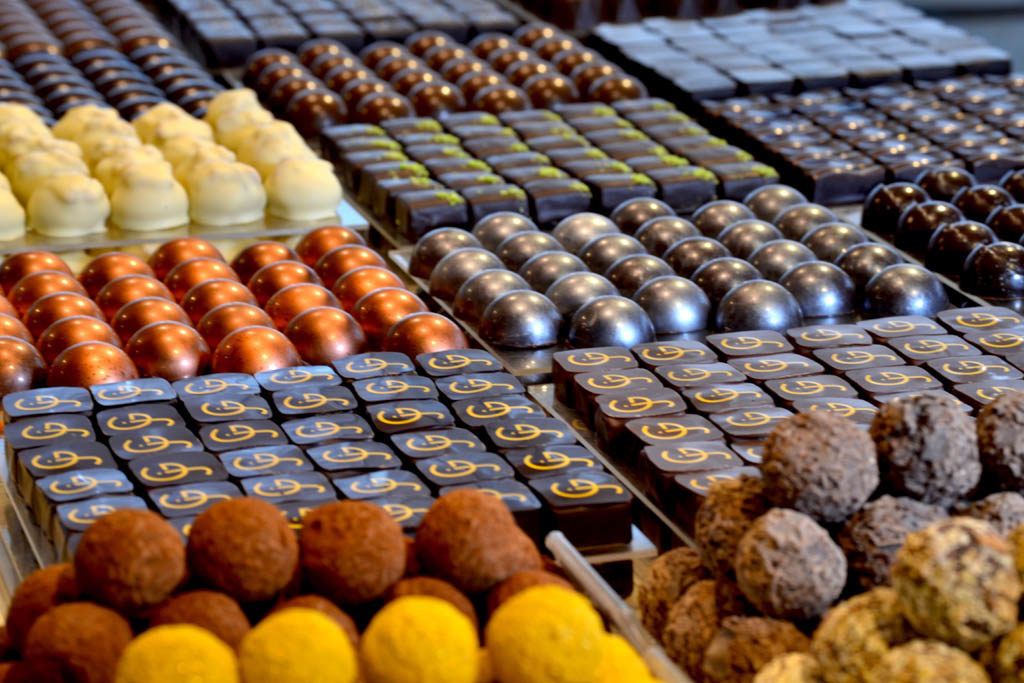While food prices are no longer rising on average, chocolate products continue to reach record levels. Driven by record cocoa prices. The question arises as to whether this rise will jeopardize the Easter chocolate market. In this article, I’ll briefly examine the cocoa market situation before delving into the dynamics of the Easter chocolate market.
Contact IntoTheMinds market research agency
Record cocoa prices: climate change to blame?
The price of cocoa has risen 6-fold between 2023 and 2024, topping $10,000 a tonne at the end of March 2024. Logically, the prices of chocolate products have risen, but less spectacularly than those of the raw material (see table below).
| Product | Increase March 2024 vs. March 2023 | Increase March 2024 vs. February 2024 |
| Chocolate bars | 7,1% | 1,5% |
| Cocoa powder | 8,8% | 1,1% |
The main cause of this explosion in cocoa prices is global warming. It has led to a drop in production in Côte d’Ivoire and market fears about supply. However, this increase did not benefit local producers, whose prices remained unchanged. This undoubtedly reflects the fact that part of the rise is purely speculative. Remember the price of sunflower oil multiplied by 3 when war broke out in Ukraine (March 2022).
The Easter chocolate market
Even in a context where inflation is affecting various sectors, Easter chocolates remain a must-have. Their penetration rate has increased by 3.5 points (55.8% in 2023 compared with 52.3% in 2019 for France).
| Indicator | 2019 | 2022 | 2023 |
| Penetration | 52,3% | 55,4% | 55,8% |
| Quantities purchased per buyer | 0,97 kg | 1,08 kg | 1,04 kg |
| Frequency of purchase by number | 1,8 | 1,9 | 1,9 |
| Quantities purchased per act | 0,52 kg | 0,56 kg | 0,54 kg |
| Expenditure per buyer | 18,80 € | 20,80 € | 22,40 € |
| Expenditure per transaction | 10,17 € | 10,78 € | 11,66 € |
| Average price per kg | 19,45 € | 19,27 € | 21,61 € |
| Average price per item | 3,72 € | 3,70 € | 4,01 € |
Quantities purchased remain stable (0.52 kg in 2019 vs. 0.54 kg in 2023). Still, expenditure per item is rising sharply, no doubt driven by structural inflation on the one hand and inflation specific to cocoa on the other. This is reflected in the average price per kilo, which has risen significantly (€21.61 in 2023 vs. €19.45 in 2019).
Despite these difficulties, the Easter tradition remains strong. Consumers are willing to pay to keep it alive.
The figures bear witness to this trend:
- Sales for the 2023 Easter campaign reached €357 million, representing a 15% increase on 2022.
- The quantity purchased fell slightly by 2%, but the average price per kilo climbed to €24.30, an increase of 17% on the previous year.
Manufacturers innovate to secure sales
Macroeconomic indicators have not been up to scratch since the Covid crisis. Chocolate manufacturers are, therefore, stepping up their inventiveness to conduct consumer purchases. The stakes are high since Easter chocolates for children account for 79% of sales. Even in times of crisis, parents are ready to make a special effort to keep their little ones happy.
To meet these expectations, brands like Lindt have innovated with limited editions and special products, contributing to significant sales growth in 2023. For its part, Ferrero has also been able to bounce back, proposing innovations that have made it into the top 10 in sales. This dynamic is illustrated by Lindt’s market share increase to 18.8% and Ferrero’s strong comeback with a 41% market share.
Brands have, therefore, adjusted their strategies, proposing smaller, more accessible formats (thanks to shrinkflation!) while playing on surprise elements and limited editions to keep families engaged. Mondelez, for example, is maintaining its place in the market thanks to affordable prices and an offer tailored to family expectations.
With initiatives such as TV commercials and a stronger digital and e-commerce presence, brands seek to maximize consumer attention in the six weeks leading up to Easter. The challenge is to maintain sales levels despite the unfavorable economic climate.
The gap widens with high-end chocolates
Over the Easter weekend, I visited several Parisian chocolatiers to understand market dynamics better. What I saw reinforced my impression that a gap is opening between the low-end (industrial products sold in supermarkets) and the high-end. Like pastry, whose most high-profile representatives draw in the crowds and charge stratospheric prices, chocolate is also undergoing a process of “premiumization.”
Patrick Roger, Pierre Marcolini, and Jacques Genin undoubtedly showed the way. In recent months, we’ve seen the emergence of young talents who are moving directly into the very high-end: Jade Genin (Jacques’ daughter), William Artigue, Aurélien Rivoire, Maxime Frédéric …. Maxime Frédéric is an interesting case in point, as he works for Louis Vuitton (see video above). Luxury brands are investing more and more in gastronomy and creation. It’s a way of reaching a new audience and extending the brand’s territory.

Posted in Marketing.
